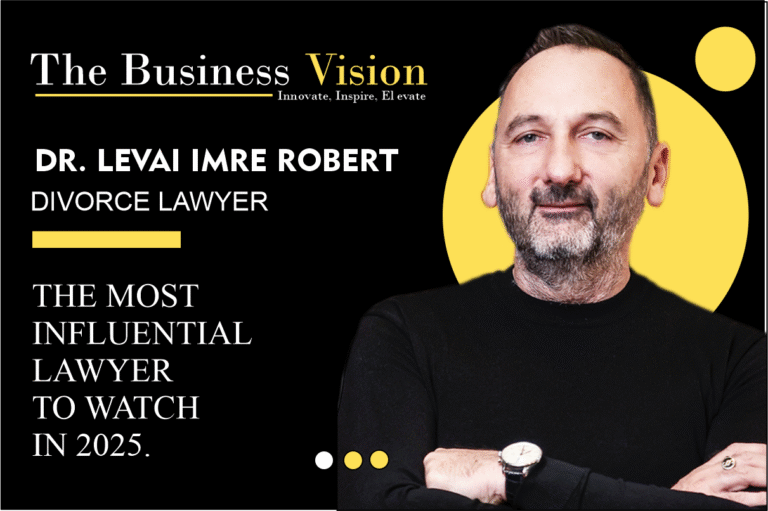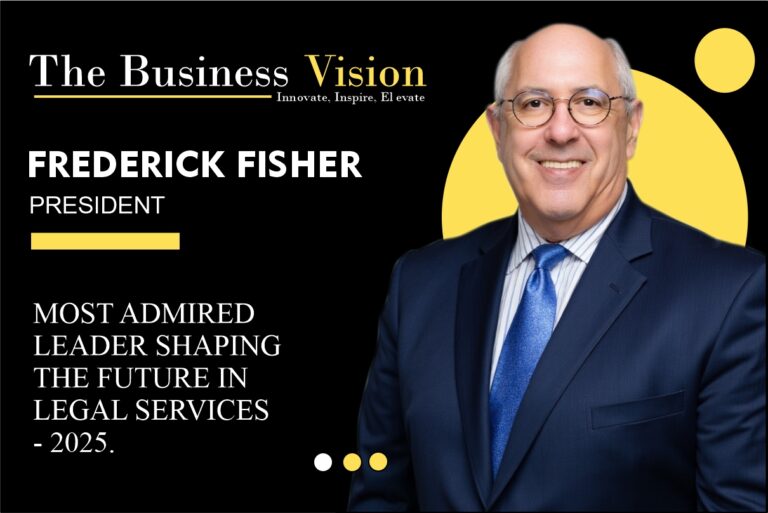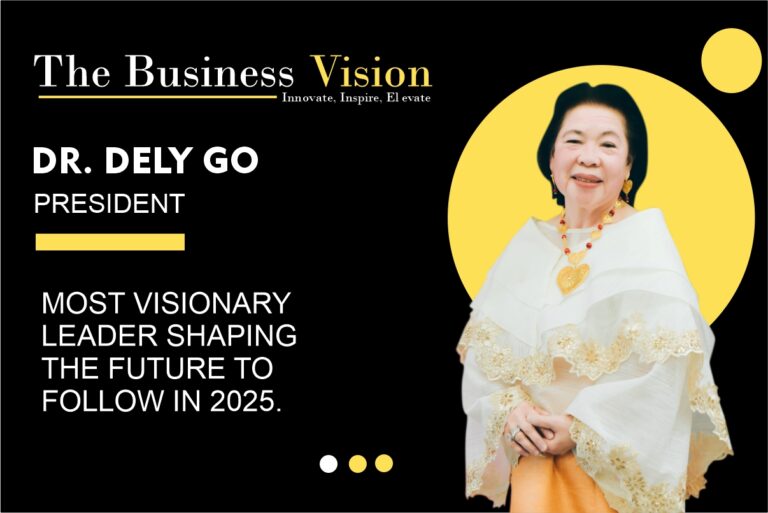Research shows 70–90% of sales strategies fail within 18 months—most within the first six. Brutal.
The quarterly sales report drops onto the CEO’s expensively polished desk, the sound echoing across the otherwise quiet corner office. The instinct kicks in like a well-oiled machine: set targets more aggressively, tinker with commission schemes, schedule fresh training sessions. The team is already exhausted, yet the needle refuses to budge.
Michael Saletta, founder of results-focused executive group Saletta Leadership, LLC, says this reflex is logical but myopic. Missed quotas pile up quarter after quarter, top performers burn out and walk away, and once-promising initiatives stall before they ever gain traction.
“What looks like a sales problem is almost always a leadership alignment problem in disguise.”
— Michael Saletta
For thirty-five years, Saletta has quietly shaped the strategy rooms of the world’s most respected firms, from Fortune 500 titans to key government agencies. Known to insiders as The Master Facilitator, his verdict is unsettling yet unmistakable: sustainable, explosive growth never springs from stand-alone excellence—in sales, strategy, or leadership. It emerges only from the virtuous synergy of all three, a triad he has named The Essential 3.
THE GREAT DISCONNECT: How Silos Sabotage Growth
Silos inflate risk and stifle agility. CEOs misread capabilities they’ve never experienced firsthand, field teams misjudge intent they’ve never heard spoken aloud, and strategies hailed in boardrooms miss the nuance of day-to-day trade-offs. In that gap, mistrust breeds micro-cultures of concealment, distortion, and risk-averse behavior—more focused on securing resources than creating value.
When executives listen selectively and divisions speak exclusively, cohesiveness corrodes. Inevitably, a crisis surfaces and the façade erupts. Correcting course requires decisive simplification—removing redundant sign-offs, consolidating duplicative projects, and deploying real-time dashboards so any salesperson can flag a misaligned quarter and any team member can surface hidden risk.
Unity demands commitment. When interdependencies are explicit, competence replaces confusion and the organization becomes a coordinated engine, calibrating and improving in real time.
THE ESSENTIAL 3: The Unbreakable Trinity of High Performance
This isn’t philosophical musing—it’s a practical, operational model made tangible through proprietary, science-driven frameworks like the Performance-Aligned Leadership Model (P.A.L.M.™) and the Brain C.R.A.V.E.S.™ mindset decoder. These proven tools, refined over two decades, transform alignment theory into a measurable competitive weapon.
The result: people, actions, and KPIs align to feed The Essential 3 engine. Leaders stop preaching platitudes and start modeling required behaviors. Credibility, conviction, and capability become visible in the work. Calibration replaces slides, and quarterly plans become weekly adjustments—grounded in data and informed by front-line insights. Think of alignment as harmony—when leadership, strategy, and sales play in sync, the result isn’t noise or competition, but a unified performance that accelerates growth.
“Alignment turns vision into velocity — potential into performance.”
— Michael Saletta
THE ARCHITECTURE OF ALIGNMENT: The P.A.L.M.™ Model
If The Essential 3 is the destination, Saletta’s Performance-Aligned Leadership Model (P.A.L.M.™) is the detailed architectural blueprint. It moves organizations from fingers spread in different directions to a unified hand, capable of powerful, focused action.
Leadership isn’t about making speeches and signing budgets—it’s about ensuring every department, division, and team member moves in the same direction. Great leaders are less like soloists and more like conductors—bringing out the best from each section, ensuring timing, tone, and focus align to create something far greater than the sum of its parts.
P.A.L.M.™ is built on seven interdependent layers:
- Foundational Layers (1–3): Trust Actions (the non-negotiable bedrock), Communication & Collaboration, and Roles & Responsibilities / Systems & Processes. Without clarity and integrity here, everything above is built on sand.
- Productivity Layers (4–5): Commitment (the shift from mere compliance to owned, discretionary effort) and Focused Action (where strategy becomes daily prioritized behavior).
- Outcome Layers (6–7): Shared Accountability (where leaders own performance outcomes together) and finally, Results—measurable, sustainable, scalable success.
“It’s not just about individual layers,” Saletta emphasizes. “It’s about how each layer impacts every other layer. Strong Communication strengthens Commitment. Clear Roles drive Focused Action. Weak Trust undermines everything above it.”
PROOF OF CONCEPT: La-Z-Boy’s 20-Year Masterclass in Alignment
Theory validates in practice. For more than two decades, Michael Saletta has collaborated with La-Z-Boy Furniture Galleries to integrate The Essential 3 into their culture. A shining example: Enhance sales strategy with their groundbreaking In-Home Design program.
The plan was genius: provide complimentary professional design service to differentiate the brand and deliver huge value. But Saletta’s initial mystery shops identified a glaring gap—sales associates weren’t routinely engaging tools like sketch pads or asking key clarify needs questions (Brain CRAVES) to open dialogue. The plan existed, but leadership communication and sales execution weren’t aligned.
Saletta’s intervention was comprehensive:
- Leadership: Worked with executives to reinforce accountability and ensure strategic clarity from the top.
- Sales: Trained teams on consultative skills needed to confidently present the program, appealing directly to customer CRAVES needs—Confidence in sketching and questioning, Relationship building, In-Home Values connection, and Safety in executing the process.
- Cross-Functional Alignment: Brought together sales, marketing, merchandising, warehouse, administration, and delivery teams so the entire organization understood its role in delivering the promise.
The result? Average tickets consistently increased 3–5 times, close ratios nearly doubled, and La-Z-Boy solidified market leadership with a value proposition competitors couldn’t replicate.
“Strategy aligns an organization’s greatest strengths with its greatest opportunities to produce a competitive advantage now and in the future.”
— Michael Saletta
THE MINDSET ENGINE: Understanding Brain C.R.A.V.E.S.™
An aligned organization is powerful, but it must be oriented toward motivated customers. This is where Saletta’s second groundbreaking framework comes in: Brain C.R.A.V.E.S.™. This model decodes core, non-negotiable motivational drivers hardwired into every human brain—every customer and employee.
“Sales success isn’t just about scripts, metrics, and closing techniques. If you want sales mastery, you must understand the brain’s built-in drivers.”
— Michael Saletta
Every buyer subconsciously scans for:
- Confidence
- Relationships
- Autonomy
- Values
- Ego
- Safety
Making this tangible—here’s how each plays out in La-Z-Boy’s In-Home Design program:
· Confidence – Before: A homeowner nervously asked, “What if this design doesn’t really work in my space?” The uncertainty stalled commitment.
After: With designers providing detailed layouts inside the home, the customer could literally see the vision come alive. Confidence skyrocketed, and purchase hesitation dissolved.
· Relationships – Before: Buyers felt like they were just another transaction in a furniture store. Conversations were surface-level, transactional, and forgettable.
After: Associates who engaged the design process uncovered family stories—how the living room was the gathering hub or how the dining table marked milestones. Trust deepened, and the relationship shifted from salesperson to partner.
· Autonomy – Before: A customer pushed back with, “I’ll need to check with my spouse,” signaling pressure and lack of control.
After: The design sketches put the choice in the buyer’s hands. They took ownership—“This is exactly what I want to show my spouse”—transforming the process into their decision, not something being sold to them.
· Values – Before: Buyers hesitated if they didn’t see how La-Z-Boy aligned with their personal style or family priorities.
After: Consultants connected designs to what mattered most—durability for kids, comfort for aging parents, or sustainability goals. The purchase became more than furniture; it became a reflection of the customer’s values.
· Ego – Before: A buyer nitpicked details, defending their own style expertise. The interaction risked stalling in defensiveness.
After: When the consultant framed the design as something they had inspired—“This layout really captures your style vision”—the buyer leaned in, proud to be the visionary. They saw themselves as the hero, not just the customer.
· Safety – Before: Many stalled over cost, worried about wasting money on the wrong fit. “What if it doesn’t work once it’s delivered?”
After: The design sketches, paired with clear guarantees and delivery precision, reduced the fear. Customers could picture the end result and felt reassured their investment was safe.
“An objection identified is a need to be clarified. Objections are windows, not walls…don’t overcome them — uncover them.”
— Michael Saletta
At La-Z-Boy, when sales teams learned to recognize and speak to these Brain C.R.A.V.E.S.™ needs, objections stopped being roadblocks. They became invitations to build trust. Transactions turned into transformational consultations—and revenue growth followed.
Leaders who coach teams to recognize and speak to these drivers move from guesswork to precision, transforming sales from transactions into trust-building consultations.
IMPLEMENTATION SHIFTS: From Command to Cultivation
Implementing The Essential 3 requires fundamental shifts in leadership identity and feedback culture.
The Mindset Shift: The traditional all-knowing commander dictating strategy from an ivory tower is obsolete. Saletta advocates for the leader as cultivator—an architect of environment and curator of talent.
“The old command-and-control model creates compliance, not commitment. The cultivator leader creates the conditions for high performance: psychological safety, crystal-clear expectations, and feedback-rich culture.”
— Michael Saletta
The Feedback Shift: Move away from dreaded, backward-looking annual reviews toward forward-looking, real-time coaching conversations.
“When feedback is saved for formal once-a-year events, it becomes a weapon of judgment,” Saletta states. “But when feedback is integrated into daily workflow—a brief conversation after a client call, a quick huddle to debrief a win or loss—it becomes a tool for acceleration.”
This continuous loop closes the Gap Problem, ensures strategic initiatives are executed correctly in the field, and builds immense trust.
THE LEADER’S PLAYBOOK: Embedding The Essential 3
Adopting this framework requires intentional action. Saletta provides a clear playbook:
- Filter Initiatives Through P.A.L.M.™: Before launching any new sales goal, vet it against the 7 layers. Is there trust? Clear communication? Defined roles?
- Train to C.R.A.V.E.S.™: Make understanding these drivers a core sales competency.
- Measure Alignment: Track metrics related to cross-functional collaboration and strategic adoption, not just lagging revenue indicators.
- Coach in the Game: Shift from quarterly performance reviews to real-time, in-the-moment coaching.
- Celebrate Strategic Behaviors: Reward actions that advance strategy, not just end-of-month heroics.
THE FUTURE OF ALIGNMENT: Leadership as a Continuous Practice
For organizations wondering if this is a one-time initiative, Saletta’s answer is unequivocal: alignment is not a project with a start and end date; it is a continuous practice.
“Market conditions shift. Customer preferences evolve. New competitors emerge. Your strategy must be dynamic, and therefore, your alignment must be constant,” he says. “This isn’t about achieving perfect alignment once and then resting. It’s about building the rhythms—the weekly syncs, the cross-functional sessions, the coaching habits—that allow you to stay aligned even as you pivot.”
The ultimate goal? An organization that is inherently self-aligning, where the principles of The Essential 3 are so deeply embedded in the culture they become the default operating system—a relentless, adaptive, unbeatable competitive advantage.
YOUR NEXT MOVE: Critical Questions
Ask yourself and your executive team:
1. Alignment Check: On a scale of 1–10, how tightly is your sales force aligned with your strategic priorities—not just aware of them, but executing against them?
2. Momentum Gaps: Where exactly is performance leaking—missed quotas, stalled initiatives, or friction across departments?
3. Coaching Reality: Are your leaders coaching behaviors in real time, or only reviewing lagging results after the fact?
4. Role Clarity: Do people across functions clearly understand their roles and interdependencies—or are critical handoffs being dropped in the cracks?
5. Reward Systems: Do your incentives reinforce long-term strategic behaviors, or do they glorify end-of-month heroics that undermine alignment?
CONCLUSION: The Symphony of Success
The path from dormant potential to compounded growth is not a secret. It is a question of alignment. With the tested templates of P.A.L.M.™ and Brain C.R.A.V.E.S.™, Michael Saletta has given leaders a roadmap.
This work is more than a temporary fix—it’s a new operating system for sustainable excellence. It erases artificial silos and finally conducts the powerful symphony of leadership, strategy, and sales in unison.
The Essential 3 is not just a theory; it is a rallying cry to a new generation of leaders—an age when silos collapse, assumption gives way to clarity, and companies are moved by a single-minded purpose that is both strategically astute and humanly wise.
The only question that remains is whether your organization will be one of them.
Michael Saletta is a Leadership Strategist, Mindset Architect, and founder of Saletta Leadership. A recognized authority in leadership, motivation, and executive performance, he equips top leaders and teams with science-based tools to fuel culture, strategy, and outcomes. SalettaLeadership.com
Read the digital version of this edition: https://thebusinessvisionmagazine.com/speaker-leading-sales-excellence-business-strategy/






